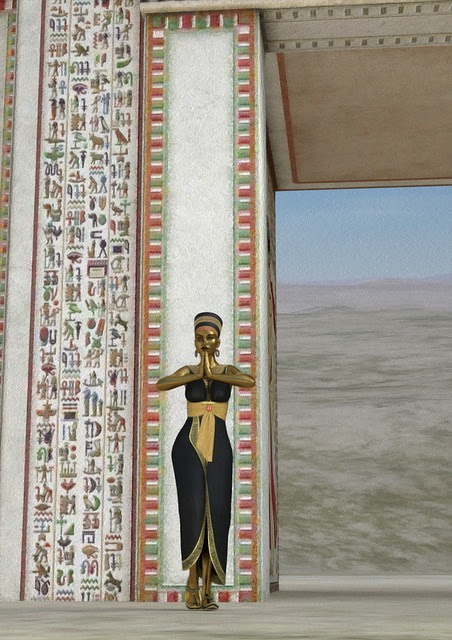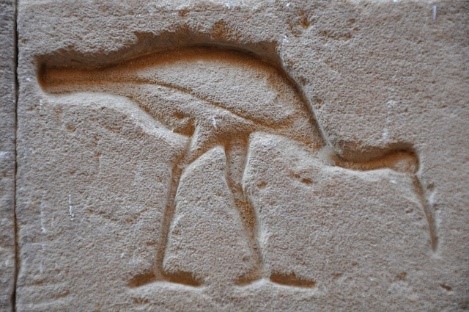
In 1996, a group of British magical practitioners decided to form the Temple of Khem in order to offer structured courses into the Mysteries for those who wished to pay homage to the gods of the Nile Valley. Using the resources at the British Museum and the Egypt Exploration Society, it was possible to put together a basic, introductory course that would be well within the grasp of any genuine seeker, whilst not compromising or trivialising authentic source material.
Let’s make no bones about it, today’s Egyptian interpretation belongs to a revivalist tradition and should not claim to be anything else. Nevertheless, the system needs to be as close as it can to the beliefs of ancient Egypt without falling into the trap of lumping all the gods together in one timeless pantheon … and expecting their heka to work! In order to follow the Old Ways, it is easier to understand if we use three separate approaches:
- the Stellar Path that deals with the primeval/primordial forces of the universe usually aligned with ritual magic and inner temple working;
- the Solar Path that offers a more intellectual, spiritual or mystical approach;
- the Lunar Path, which concentrates on the purely devotional aspects and the ability to move between the worlds, i.e. different planes of consciousness.
This three-fold approach needs to be understood from the start, but so does the enormous time span of Egyptian history, which always tends to complicate matters when identifying with a particular deity or Dynasty. A fundamental study is necessary because not everyone works magically or mystically, at the same pace or level. Some take longer to realise that an intimate knowledge of Egyptian myth and its attendant politics is essential for the effective practice of magic/mysticism at a higher level of awareness. A knowledge that has to extend beyond the stereotypical deities of popular Egyptomania to embrace a wider and loftier range of supernatural beings; and to accept that the deities are not real ‘gods’ at the student’s beck and call. This is why it becomes so important to successful magic practice to be able to differentiate between the different levels of magic, historical influence and religious emphasis that mark the subtle shifts of importance between the different Paths. And to do so safely.
It may appear that this is merely massaging a system that purports to be all things to all men, but this is not the case. The original Egyptian religion was stellar based. Early texts refer to the stairway to heaven, and the alignment of the mortuary temples situated toward the north (the direction of the circumpolar stars) reveal the importance of the Imperishable Stars within the Mysteries. According to Egyptologists, the architectural changes in pyramid design reflect the shift from a stellar cult to one that was fully solar as the religious ideology changed and the newer priesthood gained power. As each new centre became the focus of power, so the religion altered and a new set of myths were created to attest to the local gods’ supremacy over the Old Ones.
These shifting influences on Egyptian history meant that reference texts fell roughly into two separate categories. Firstly, actual magical, religious and mythological sources written by the early native priesthood for the Egyptian people and secondly, later accounts of magic, religion and mythology translated by Greek and Roman historians and philosophers, who recorded information as told to them by latter-day Egyptian priests, since they were unable to read the texts for themselves. And by the time of the Graeco-Roman invasions the priesthood were themselves extremely vague and uncertain about the early dynastic beliefs of their own country. Subsequent translations indicate that they did not really understand the rudimentary principles of the archaic religious system, the primitive stellar-cult, or the nature of its symbolism. Unfortunately, many present-day writings on the Egyptian Mystery Tradition make no attempt to unravel the tangled skeins of this magico-religious evolution. Rather, they impose some over-simplified form of order on the chaos created by the multitude of dual-purpose gods from different periods of history. But, there is no way of simplifying this complicated tapestry because of the immense time span from pre-dynastic times to the Battle of Actium, which sealed the fate of the last ruling Great House of Egypt. Cleopatra, in terms of chronology, was nearer to man landing on the moon than to the building of the Great Pyramid at Giza.

In the days of Egyptian antiquity, however, many of the gods were abstract concepts rather than actual anthropomorphic god pictures familiar to us today. Many of the later fully-morphed deities were originally theological concepts represented by a distinctive hieroglyph. As the need for a controlling religion grew, so did the spiritual need for more tangible forms on which to focus the common people’s devotions. The common man’s mind dwelt on the concrete, not the abstract and so the gods took on those easily recognisable animal-human shapes to satisfy the religious-teaching-by-pictures demands of less scholarly folk. Egyptian life, magic and religion were inextricably intertwined, one simply could not, and did not exist, without the other. God, or a male/female/multiple concept of that god, was manifest in everything animate and inanimate.
Contrary to popular belief, the modern Egyptian Mystery Tradition is not based solely on elaborate and complicated ritual. In strictly historical terms, these daily observances were carried out in the inner sanctum of the Temple by pharaoh, or the high priest acting on his behalf. Magic was used by all levels of society as a means of national and cultural preservation, but as far as the ordinary people were concerned, much of their religion was a blend of petitioning the local patron deity for help, and simple rites of protection or healing.
Although Egyptian State magic was regarded as an exact science, with its secrets revealed only to the highest orders of the priesthood, the homes of ordinary people contained small shrines dedicated to the more domestic deities, such as Hathor, Bes and Tauret. Whether you are drawn to the primordial forces of emerging civilization; the mystery elements of a highly cultured people; or the ‘dying god’ concept of the cycle of life – the Temple of Khem will help you find the Path that is right for you.
Melusine Draco : Principal of Temple of Khem
Author of The Atum-Re Revival; Liber Aegyptius and The Calendar of Ancient Egypt.
www.templeofkhem.com
